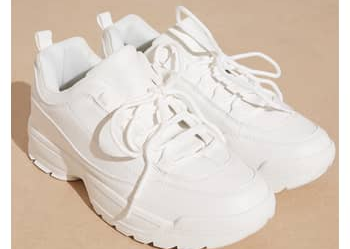

The EU is stepping up its crackdown on greenwashing. Trade groups and environmental advocates say it isn’t going far enough.
On Wednesday, the European Commission published a draft of new rules intended to stamp out fluffy and misleading eco-marketing of products including clothing and cosmetics.
The proposed regulation takes aim at a booming market for “green” products whose environmental credentials are, more often than not, hollow. It lays out baseline requirements for brands to back up any claims with robust and verified information or risk significant fines.
The long-awaited draft rules come amid a broader greenwashing crackdown that’s already changing how brands market products, pushing terms like “green” and “conscious” out of fashion.
It’s a high-stakes topic, with the UN issuing a last-chance warning on climate action this week and the reputational and regulatory risks associated with sustainability marketing rising.
But the EU’s proposed regulations don’t address the thorniest issues of all, remaining vague on the technical details of how brands should substantiate their claims. That leaves the market with increased legal risk, but without coherent, robust and comparable standards, frustrating both trade groups and environmental campaigners.
“It really runs the risk that things will get very, very confusing,” said George Harding-Rolls, campaign manager at environmental campaign group Changing Markets Foundation. “We’re going to see ‘green hushing.’ We’re going to see a lot of fashion brands and companies across sectors taking a while to digest this and in that vacuum probably making far fewer green claims.”
The New Rules of ‘Green’ Marketing
At the core of the EU’s proposed rules is a requirement brands back up any environmental claims with high quality, scientific evidence that’s been verified by a third party.
At the moment, over 50 percent of claims in the EU are vague, confusing or unfounded, according to a 2020 study by the Commission. The market is awash with more than 200 eco labels, many of which are unverified and misleading, according to the draft regulation.
Under the proposed rules, any environmental claim will need to consider the full lifecycle of a product and cover all relevant environmental impacts, rather than cherry picking one issue and ignoring others. “Self-certified” environmental labels with no third-party verification or regular monitoring will be banned.
Companies will need to be transparent about any trade offs associated with their eco claims. For instance, the draft rules highlighted ambiguity around the benefits of clothes made from recycled polyester, since these are usually made from repurposed plastic bottles which cannot be recycled again.
The proposed regulation also takes aim at “carbon neutral” and “climate neutral” claims, which it said are particularly likely to be misleading. Any climate-related claims should indicate how much brands are relying on offsets, rather than reducing their footprint. And where offsets are used, there should be clear and substantiated evidence of their impact, the draft said.
The penalties for greenwashing aren’t fully defined, but could amount to at least 4 percent of annual turnover in the countries where brands are found to have used misleading marketing, the draft said.
“The first line has been drawn in the sand,” said Dalena White, secretary general of the International Wool Textile Organisation and a spokesperson for lobby group Make the Label Count. “It’s not just a free game of let’s pick [a sustainability claim] and this is our marketing for the next season.”
From Greenwashing to ‘Green Hushing’
Though the new regulation is intended to drive ambiguity out of sustainability marketing, some industry watchers wading through the 80-page document this week said they were still missing clarity.
Brands navigating the shifting regulatory landscape over the last year have been looking to the EU to provide common, agreed upon standards for how they should back up green claims. Instead, the high-level guidelines leave the field open for companies to pick and choose the methodologies they want and for the rules to differ from market to market, industry watchers said.
“It’s a minimum baseline that leaves a lot of rules open to interpretation and doesn’t deliver any legal certainty,” said Baptiste Carriere-Pradal co-founder and director of public affairs consultancy 2B Policy and chair of fashion industry advocacy group Policy Hub. “It completely fails to deliver the clarity people wanted.”
The regulatory uncertainty is already leading some companies to stop talking about their environmental efforts. That’s not necessarily a problem according to environmental advocates, but industry representatives argue that companies will have no incentive to invest in climate action if they can’t communicate about it to consumers.
There’s still room for refinement. The draft rules need to move through the European Parliament and it will likely be years before they’re implemented as law. In the meantime, they do send a direct signal that greenwashing is out of style.
“If anything is clear from this, it’s that substantiation, primary data and the more information brands can provide, the better,” said Harding-Rolls. “And if they’re not doing that already, they probably are greenwashing.”



